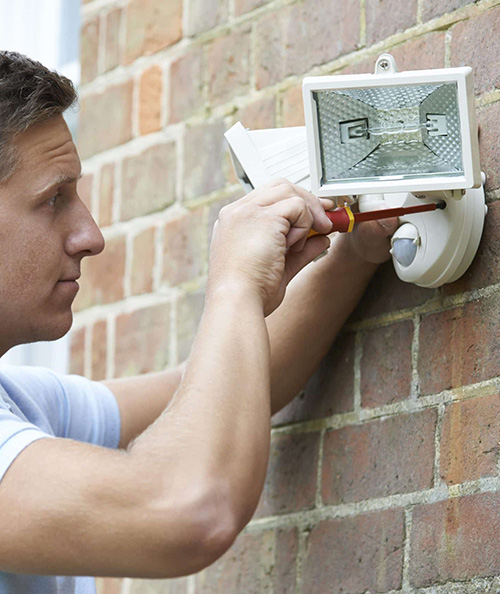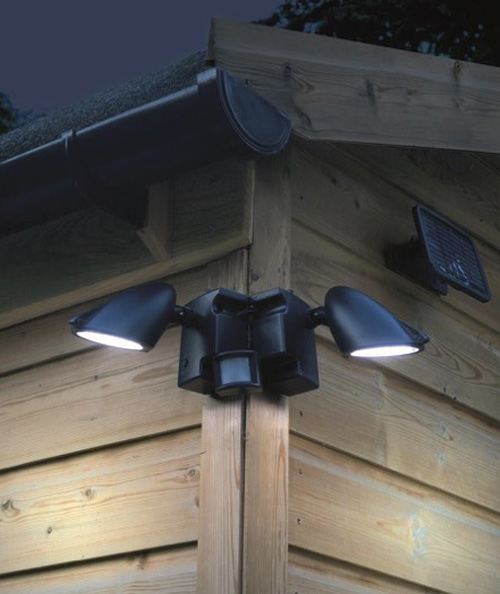What to Do in Case of a Power Cut: A Step-by-Step Guide for Coventry and Surrounding Areas
Experiencing a power cut can be frustrating and even dangerous, but by following these steps, you can ensure that you stay safe and get your power back up and running as quickly as possible. Remember to check for a power outage before calling an electrician, call your energy provider for updates and advice, and don't hesitate to call an emergency electrician if necessary. By being prepared and taking the appropriate steps, you can minimize the impact of power cuts and stay safe and comfortable during an outage.
Step 1: Check for a Power Outage
- The first step when experiencing a power cut is to determine whether it is part of a larger outage or isolated to your property. This information can help you determine what steps to take next. Here’s how:
- Ask your neighbors or nearby businesses if they are also experiencing a loss of power.
- Check Western Power Distribution’s website for the latest information on power cuts and outages in your area. Here’s how to use the website:
- Go to Westernpower website.
- Enter your postcode or click on the map to zoom in to your location.
- If there is a known power cut in your area, the website will display information about the outage, including the estimated number of customers affected and the estimated time for when power will be restored.

Step-by-Step Guide: Check for a Power Outage
Step 2: Call Your Energy Provider
If the power cut is not part of a larger outage, the next step is to call your energy provider. They will be able to provide you with information about the cause of the power cut and an estimated time for when it will be restored. In some cases, they may also be able to offer advice on how to stay safe and comfortable during the outage, such as using alternative heating sources or turning off appliances to prevent surges when the power comes back on. Here’s how:
- Find your energy provider’s emergency number on your energy bill or their website.
- Call your energy provider and report the outage.
- Get updates on when power will be restored.

Are you considering adding outdoor security lights to your property?
Step 3: Call an Emergency Electrician
If the power cut is isolated to your property and not part of a larger outage, you may need to call an emergency electrician. This is particularly important if the power cut is due to a fault or issue with your electrical system, such as a blown fuse or tripped circuit breaker. Emergency electricians are available 24/7 to provide fast and efficient repairs, ensuring that your home or business is safe and functional as quickly as possible. Here’s how:
- Find an emergency electrician in your area.
- Call the electrician and provide as much information as possible about the power cut and any symptoms you’ve noticed, such as flickering lights or buzzing sounds.
- Wait for the electrician to arrive and make the necessary repairs.
Additional Information:
- The local DNO for Coventry and surrounding areas is Western Power Distribution. You can contact them on 105, a free, 24/7 service available to all customers in England, Scotland, and Wales. You can also visit their website (https://www.westernpower.co.uk/power-outages) and click on the “Report a Power Cut” tab to report a power cut or check for updates on outages in your area.
- To report a power cut or get advice and updates from your energy supplier, you can find your supplier’s emergency number on your energy bill or their website.
- It may be helpful to prepare for a power cut by keeping a flashlight and spare batteries on hand, stocking up on non-perishable food and water, and having a plan in place for how to stay warm or cool depending on the season.
- Many energy providers offer compensation for prolonged power cuts, so it may be helpful to inform readers about their rights in this regard. Check with your energy provider for more information.
Frequently Asked Question
Weather-related issues: Strong winds, heavy rain, snow and ice storms can cause damage to power lines and electrical equipment, resulting in power cuts.
Equipment failure: Electrical equipment such as transformers, switches, and fuses can fail due to age, wear and tear, or technical faults, causing power outages.
Human error: Accidents during maintenance or repairs, or errors made by operators can cause power cuts.
Overloading: When there is excessive demand for electricity in an area, it can lead to overloading of the electrical grid, resulting in power cuts.
Animals: Animals such as birds, squirrels, and rats can cause power cuts by damaging equipment or coming into contact with power lines.
Planned outages: Sometimes, power cuts are planned by the energy supplier for maintenance work or upgrades to the electrical grid.
Cyberattacks: In rare cases, cyberattacks on power plants or electrical grids can cause power cuts.
Overall, power cuts in the UK can occur due to a variety of reasons, and it is important to be prepared for them by following the steps outlined in our guide in case of a power cut.
The duration of a power cut in the UK can vary greatly depending on the cause of the outage, the size of the affected area, and the availability of repair resources. Some power cuts may last only a few minutes, while others can last for several hours or even days.
According to a report by the energy regulator Ofgem, the average duration of a power cut in the UK is around 50 minutes per year. However, this is an average figure, and some areas may experience longer or more frequent power cuts due to local conditions or infrastructure.
It is worth noting that in the case of severe weather events or major equipment failures, power cuts can last for several hours or even days. In such cases, energy providers will often provide regular updates on the situation and offer advice on how to stay safe and comfortable during the outage. It is also a good idea to prepare for longer power cuts by stocking up on essentials such as food, water, and blankets.
According to a report by the energy regulator Ofgem, the average duration of a power cut in the UK is around 50 minutes per year. However, this is an average figure, and some areas may experience longer or more frequent power cuts due to local conditions or infrastructure.
It is worth noting that in the case of severe weather events or major equipment failures, power cuts can last for several hours or even days. In such cases, energy providers will often provide regular updates on the situation and offer advice on how to stay safe and comfortable during the outage. It is also a good idea to prepare for longer power cuts by stocking up on essentials such as food, water, and blankets.
One of the worst power outages in the UK occurred on August 28, 2003. The outage affected a large part of England, Wales, and Scotland, and lasted for nearly 2 days in some areas. The outage was caused by a combination of equipment failures and human error.
The incident began when two power stations in the north of England went offline due to a technical fault. This led to an increase in power demand on the remaining power stations, which then caused a chain reaction of failures across the network. Within minutes, the outage had spread across the country, affecting an estimated 500,000 homes and businesses.
The power cut caused major disruptions to transportation, communication, and healthcare services, and led to chaos on the roads and in public transport. Many people were stranded and had to spend the night in trains, buses, and stations. The outage also had a significant economic impact, with estimates suggesting that it cost the UK economy around £2 billion.
Following the outage, the UK government introduced new regulations and procedures to improve the resilience of the electricity network and reduce the risk of similar incidents happening in the future.
There is no specific legal timeframe for how long someone in the UK can be without electricity. However, energy suppliers are required to restore power as quickly as possible and to provide regular updates to affected customers. In some cases, customers may be entitled to compensation if a power cut lasts longer than a certain period of time.
Under the Guaranteed Standards of Performance (GSOP) scheme, energy suppliers in the UK must meet certain service standards, including restoring power within a set timeframe. If a customer experiences a power cut that affects only their property, the energy supplier must restore power within 12 hours, or the customer may be entitled to a payment of £75. If the outage affects more than one property, the supplier must restore power within 24 hours, or the customer may be entitled to a payment of £75. These compensation amounts are reviewed and updated periodically.
It is worth noting that these standards apply to electricity suppliers and not to distribution network operators (DNOs), who are responsible for maintaining the infrastructure that delivers electricity to homes and businesses. DNOs are regulated by Ofgem and they are required to maintain the electrical grid and restore power as quickly as possible after an outage.
Customers can refer to Ofgem’s website for more information about the GSOP scheme and the compensation process for power cuts and other energy supply disruptions.
Under the Guaranteed Standards of Performance (GSOP) scheme, energy suppliers in the UK must meet certain service standards, including restoring power within a set timeframe. If a customer experiences a power cut that affects only their property, the energy supplier must restore power within 12 hours, or the customer may be entitled to a payment of £75. If the outage affects more than one property, the supplier must restore power within 24 hours, or the customer may be entitled to a payment of £75.
It is worth noting that these compensation amounts are reviewed and updated periodically. Additionally, customers may need to apply for the compensation themselves by contacting their energy supplier, and the supplier may require proof of the power cut and the duration of the outage.
Therefore, if a power cut lasts longer than the set timeframe mentioned above, a customer may be entitled to compensation under the GSOP scheme. However, it is important to check with your energy supplier for their specific compensation policy and how to apply for it.
It is worth noting that these compensation amounts are reviewed and updated periodically. Additionally, customers may need to apply for the compensation themselves by contacting their energy supplier, and the supplier may require proof of the power cut and the duration of the outage.
Therefore, if a power cut lasts longer than the set timeframe mentioned above, a customer may be entitled to compensation under the GSOP scheme. However, it is important to check with your energy supplier for their specific compensation policy and how to apply for it.

